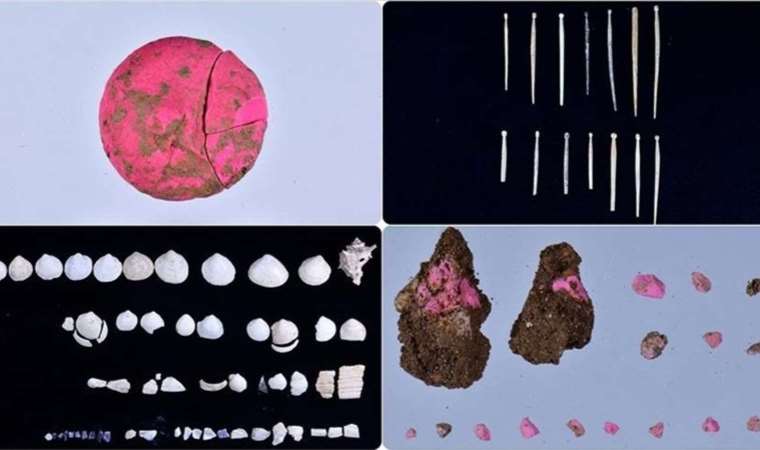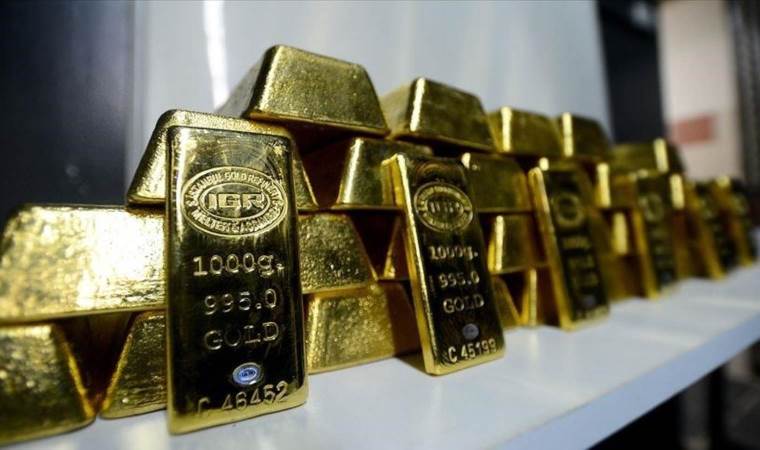Makeup materials from Roman era unearthed in ancient city of Aizanoi in Turkey
‘Place we completely uncovered was a shop that sold cosmetic products such as perfumes, jewelry, and makeup materials,’ says archaeologist Gokhan Coskun.

Archaeologists in the ancient city of Aizanoi in western Turkey uncovered remnants of cosmetic products, including jewelry items and makeup materials, used by Roman women more than 2,000 years ago.
Aizanoi is renowned for its well-preserved Temple of Zeus in Anatolia, listed on the UNESCO World Heritage Tentative List in 2012.
Gokhan Coskun, an archaeologist at Dumlupinar University and ] head of the excavation, said the majority of the work took place in the agora (marketplace) to the east of the Temple of Zeus.
Coskun said his team reached the 2,000-year-old shops in the marketplace. "Our work is not limited to just inside the shops. It continues around them as well,” he said.
During excavations, the team discovered various inscriptions providing insights into the establishment and operation of the ancient shops, shedding light on the city's commercial and social structure.
Coskun expressed his excitement about the findings.
"We determined that the place we completely uncovered was a shop that sold cosmetic products such as perfumes, jewelry and makeup materials. During the excavation here, we encountered a large number of perfume bottles. In addition to these, there are jewelry items. Among these, there are various beads belonging to products such as hairpins and necklaces used by women,” he said.
Coskun confirmed that the remnants were indeed makeup materials used by Roman women.
Detailing the types of materials uncovered, Coskun said: “One of the most surprising findings was that we came across were makeup pigments similar to blush and eyeshadow used today. Of course, they are not in a very well-preserved state. Sometimes they are found in 1 or 2-millimeter (0.04-inch) pieces. We also found well-preserved pieces during the excavation.”
Noting that in the Roman Empire, makeup materials such as blush and eyeshadow were often placed inside oyster shells and used, he said. “We also encountered a large number of oyster shells in the shop we excavated."
Coskun emphasized that the predominant colors discovered were red and pink, with makeup pigments found in 10 different hues.
Located 57 kilometers (35 miles) from the Kutahya city center, the ancient site saw its golden age in the second and third centuries AD and became “the center of the episcopacy in the Byzantine era," according to the Turkish Culture and Tourism Ministry website.
Recent excavations around the Temple of Zeus indicate the existence of several levels of settlement in the city dating as far back as 3000 BC. In 133 BC, it was captured by the Roman Empire.
In 1824, European travelers rediscovered the ancient site.
Between 1970 and 2011, the German Archeology Institute unearthed a theater and a stadium, as well as two public baths, a gymnasium, five bridges, a trading building, necropolises and the sacred cave of Metre Steune -- a cultist site thought to be used before the first century BC.
Since 2011, Turkish archeologists have been carrying out work at the ancient site. This year, excavations were transferred to the Kutahya Museum Directorate.
Most Read News
-
 Pope Francis dies at 88 after prolonged illness: Vatican
Pope Francis dies at 88 after prolonged illness: Vatican
-
 Kremlin ‘satisfied’ with US position ruling out NATO mem
Kremlin ‘satisfied’ with US position ruling out NATO mem
-
 Russia, Ukraine report airstrikes as Putin’s Easter ceas
Russia, Ukraine report airstrikes as Putin’s Easter ceas
-
 Trump ‘values’ talks with Japan, says Premier Ishiba ami
Trump ‘values’ talks with Japan, says Premier Ishiba ami
-
 US scales back development, diplomatic presence in Afric
US scales back development, diplomatic presence in Afric
-
 Israel bans Palestinian minister from occupied West Bank
Israel bans Palestinian minister from occupied West Bank
-
 At least 33 civilians killed in RSF shelling of Sudan’s
At least 33 civilians killed in RSF shelling of Sudan’s
-
 Gold price exceeds $3,400 to reach new record high amid
Gold price exceeds $3,400 to reach new record high amid
-
 China sanctions US lawmakers, officials, NGO heads
China sanctions US lawmakers, officials, NGO heads
-
 El Salvador’s president calls on Maduro to release Venez
El Salvador’s president calls on Maduro to release Venez










